Sennheiser Ambeo Soundbar Mini vs Sonos Arc: which is best?
Battle of the Dolby Atmos soundbars
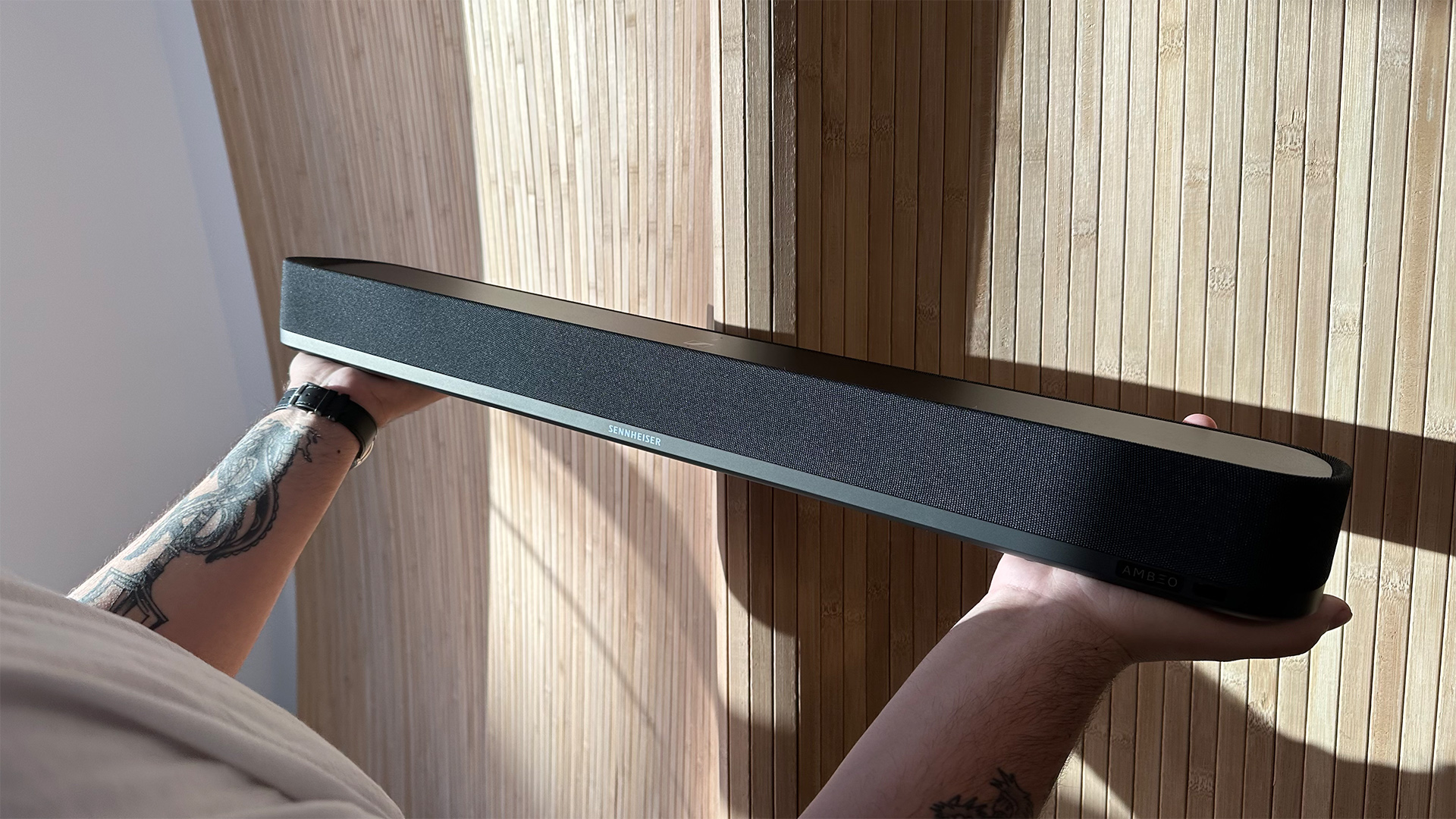
Connectivity: HDMI (eARC), USB, wi-fi, Bluetooth
Sound formats: Dolby Atmos, DTS:X, Sony 360 Reality Audio
Dimensions (hwd): 6cm x 67cm x 11cm
Weight: 3.3kg
Good things don't always come in small packages. The Ambeo Mini lacks the heft and impact of other Ambeo soundbars and can't hold a candle to the Sonos Arc in the sound department. It's lacking dynamics, and the omission of upwards-firing drivers harms the Atmos performance.
For
- Clear and clean sound overall
- Premium build and aesthetic
- Comprehensive app
Against
- Thin and uninspired sound
- Lacks low-end authority
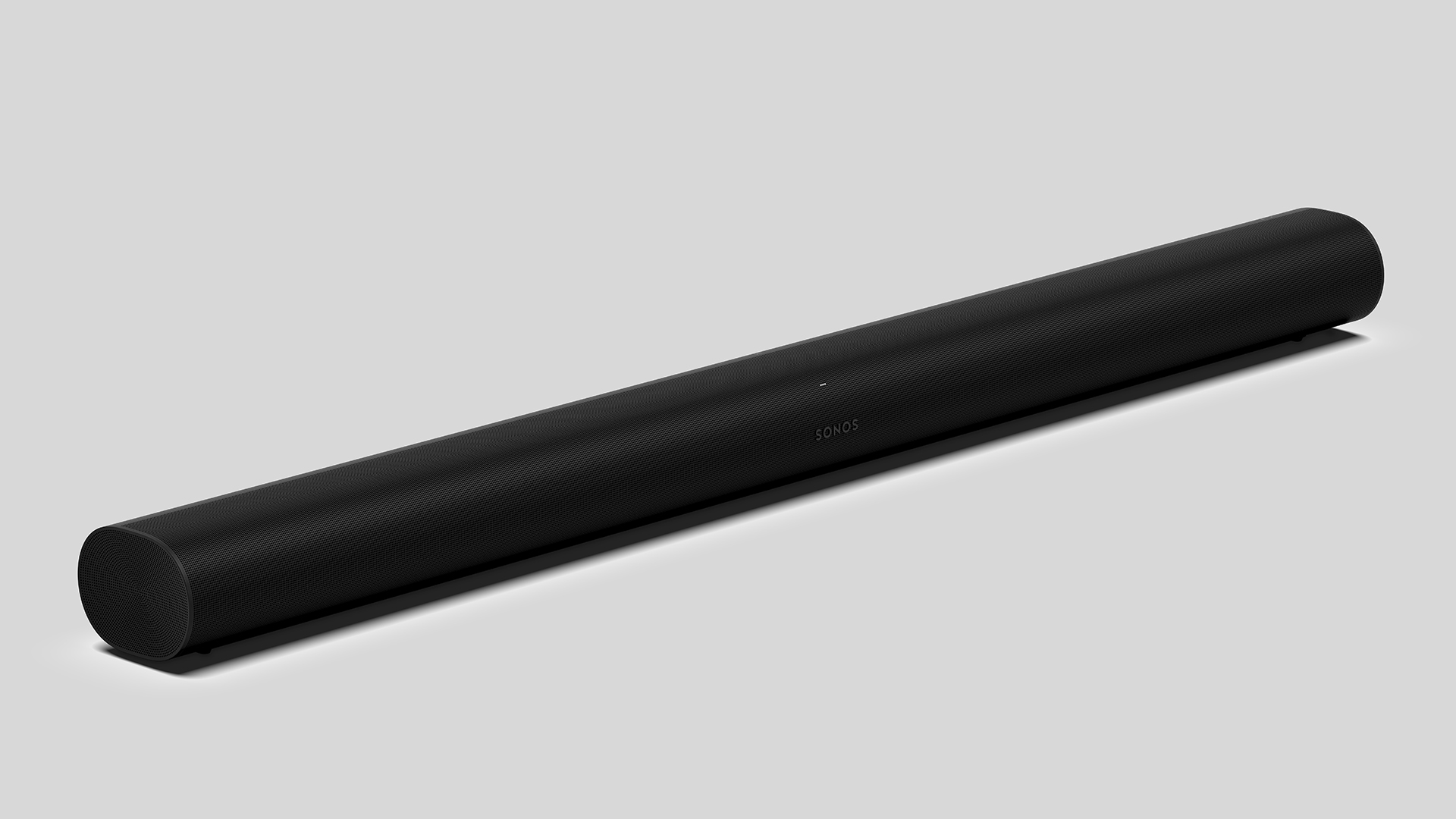
Connectivity: HDMI (eARC), optical, wi-fi, ethernet
Sound formats: Dolby Atmos, DTS Digital Surround, Stereo PCM
Dimensions (hwd): 9 x 114 x 12cm
Weight 6.3 kg
The Arc is much bigger than the Ambeo Mini, but all the better for it. It sounds better by a country mile, has a more advanced feature set and works seamlessly with other Sonos speakers. A deserved What Hi-Fi? Award winner that still sees off the competition three years after launch.
For
- Convincing Dolby Atmos
- Dynamic, detailed, controlled
- All of the usual Sonos smarts
Against
- Music could be better projected
- Some rivals sound weightier
A soundbar is a surefire way to improve your TV's sound. They're simple to use, take up less space than a surround sound system and are usually more affordable, too.
But Sennheiser's Ambeo range isn't in danger of being called affordable. The original Ambeo (since renamed Ambeo Soundbar Max) burst onto the scene as the biggest, priciest and one of the best soundbars we've ever tested. The Ambeo range has since expanded, with a Plus model earning five stars, and then a Mini variant attempting to pack the same sonic oomph into a smaller package.
So how does the Mini compare to the similarly-priced Sonos Arc? Let's take a look.
Sennheiser Ambeo Soundbar Mini vs Sonos Arc: price
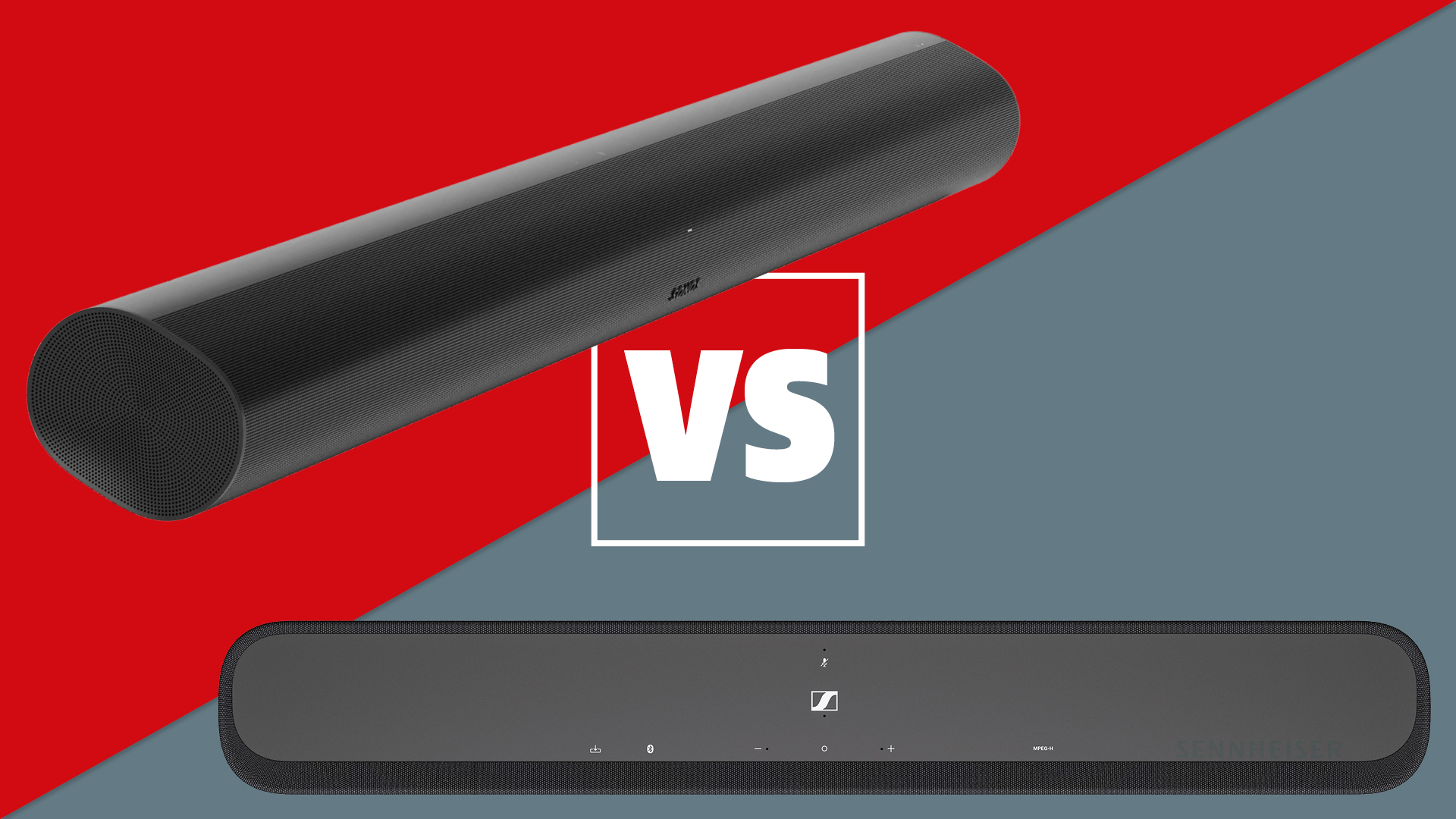
The Sonos Arc is the older of the two soundbars – it launched in June 2020 for £799 / $799 / AU$1399. Officially, it's now priced at £899 / $899 / AU$1499, but it's regularly discounted to around £699 / $719 / AU$1274. We've seen in go down as low as £667 in the past, so canny buyers could save a wedge.
The Ambeo Soundbar Mini – or Ambeo Mini, as most people will call it – launched in August 2023 for £699 / $800 / AU$1300, and again, there are deals to be had. At time of writing, it's selling for £679 / $699 / AU$1099.
Winner: Sennheiser Ambeo Soundbar Mini
Sennheiser Ambeo Soundbar Mini vs Sonos Arc: design
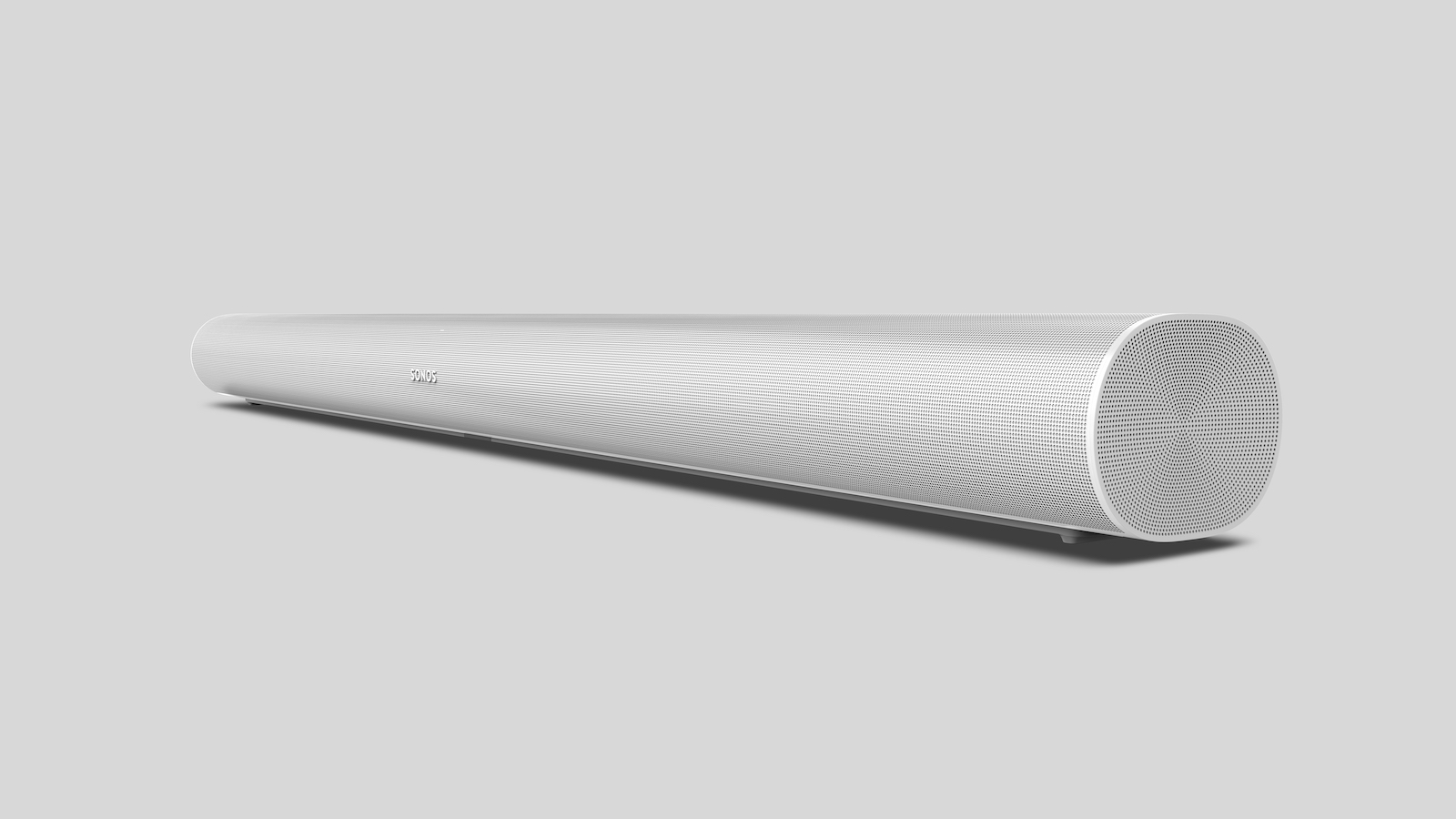
We prefer the look of the Sonos Arc over the Ambeo Mini. The Arc's curved design is more refined, whereas the Ambeo Mini looks a bit like a flat-roofed pub. The Ambeo Mini is about as long as a supermarket baguette, with sharp angled lines and monochromatic matte black and mesh exterior. A small LED light bar shows status indicators such as the volume, while controls are via capacitive touch buttons. It only comes in black, while the Sonos Arc is available in white as well.
The Ambeo Mini lacks an HDMI passthrough, as do plenty of soundbars at this price (including the Arc). But the placement of the ports is less forgivable – the power connector and HDMI socket are too close together, with the power cable blocking the HDMI socket when plugged in. While this can be rectified by switching the connector the other way around, it doesn’t seem like the intended way to plug it in as the fit between the chassis of the soundbar and the cable is uncomfortably tight.
The Arc is almost twice as long as the Ambeo Mini and is best partnered with a 55-inch TV. It's clothed in a 273-degree grille that gives it a nice svelte look, and makes it seem less imposing than its dimensions would suggest. LEDs shine through four holes above the Sonos logo to indicate status, and their brightness adjusts depending on the room's brightness. It's little touches like this that make all the difference.
Winner: Sonos Arc
Sennheiser Ambeo Soundbar Mini vs Sonos Arc: features
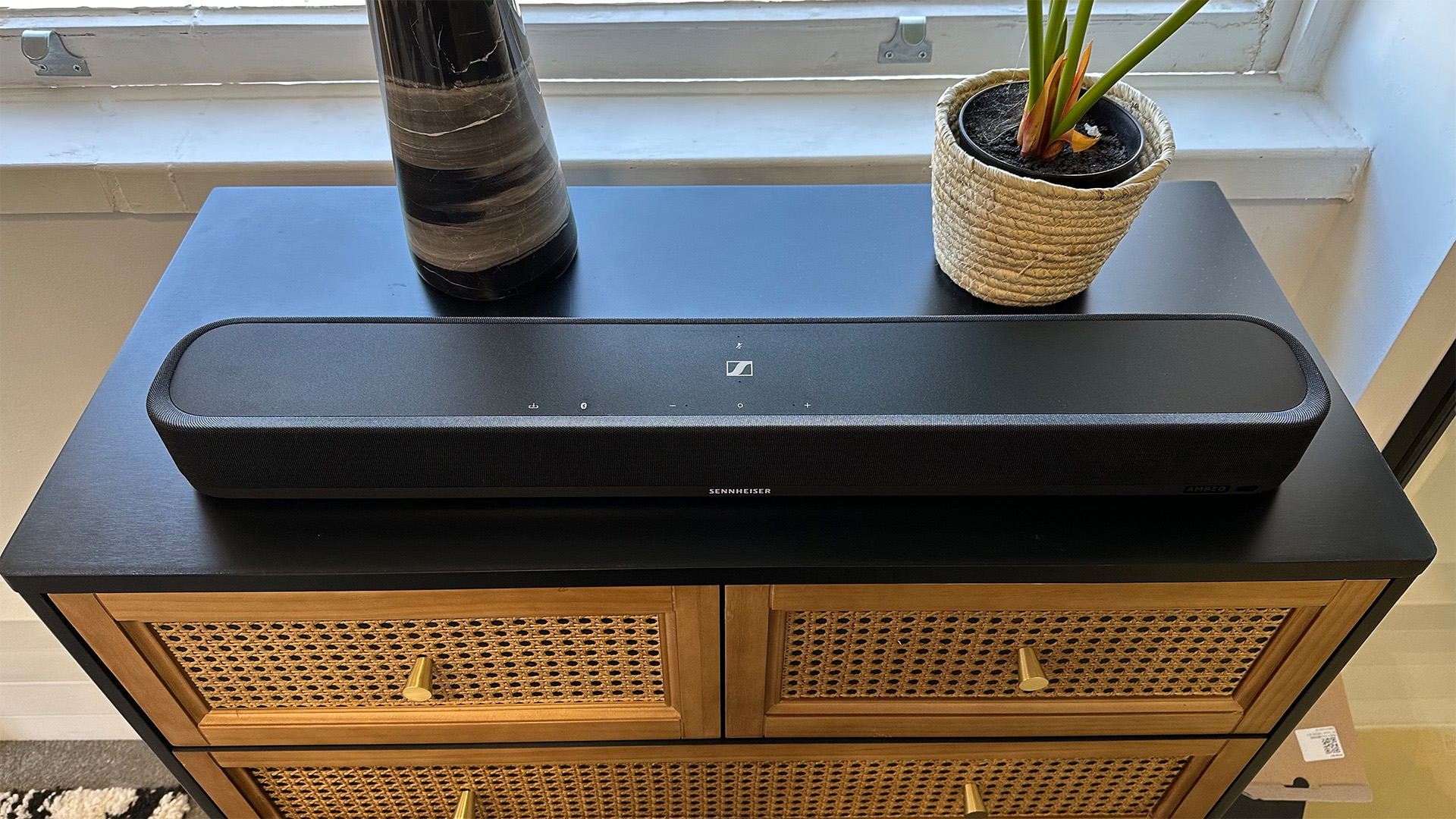
The Ambeo Mini supports Dolby Atmos, but because it doesn't have upfiring drivers, it relies on digital processing to create the effect of overhead channels. This can be set up using the Sennheiser Control App, which calibrates to your room size and layout.
Atmos comes via the higher-quality Dolby True HD format thanks to the HDMI eARC connector. We do feel an additional port could have been squeezed in to make up for the HDMI 2.1 you’ll be sacrificing on your TV (some TVs only have two HDMI 2.1 ports, after all).
The Mini also supports DTS:X, MPEG-H and Sony 360 Reality Audio immersive audio codecs. And wirelessly, you're well catered for, with wi-fi, Bluetooth and Apple AirPlay 2, as well as link streaming services such as Spotify Connect and Tidal Connect. Sennheiser’s app also has its own media player controls built in, meaning you can stream to and control the soundbar from one convenient place.
The Arc is arguably the soundbar with the better features. It features an ethernet connection for wired networking, and a single HDMI port. Also included is an optical adapter for those with older TVs, but Sonos assumes you'll use HDMI and the ARC (Audio Return Channel) functionality to get the sound from your TV to the Arc.
HDMI eARC (Enhanced Audio Return Channel) is also onboard, to handle higher-quality Dolby Atmos signals from TVs that can output them.
The Arc's Dolby Atmos sound field is generated by 11 Class D digital amplifiers that power 11 custom drivers (eight woofers, three silk-domed tweeters). That's way more than the Ambeo Mini's six drivers (four full-range, two subwoofer units), but understandable given the Arc's size. Two of the Arc's tweeters fire diagonally to create the height effect.
Like the Ambeo Mini, the Arc can calibrate to your room, this time using Sonos' Trueplay technology. And it can be tweaked using the very intuitive Sonos app. Extra features include Night Sound (which flattens dynamics and reduces bass, ideal for when you don't want to wake the rest of the household) and Speech Enhancement to project dialogue more clearly.
The Arc plays nice with the Spotify and Tidal phone apps, and AirPlay 2 allows for almost any audio to be sent to it from an iOS device. And being a Sonos speaker, it fits seamlessly into your home Sonos multi-room set-up.
Winner: Sonos Arc
Sennheiser Ambeo Soundbar Mini vs Sonos Arc: sound
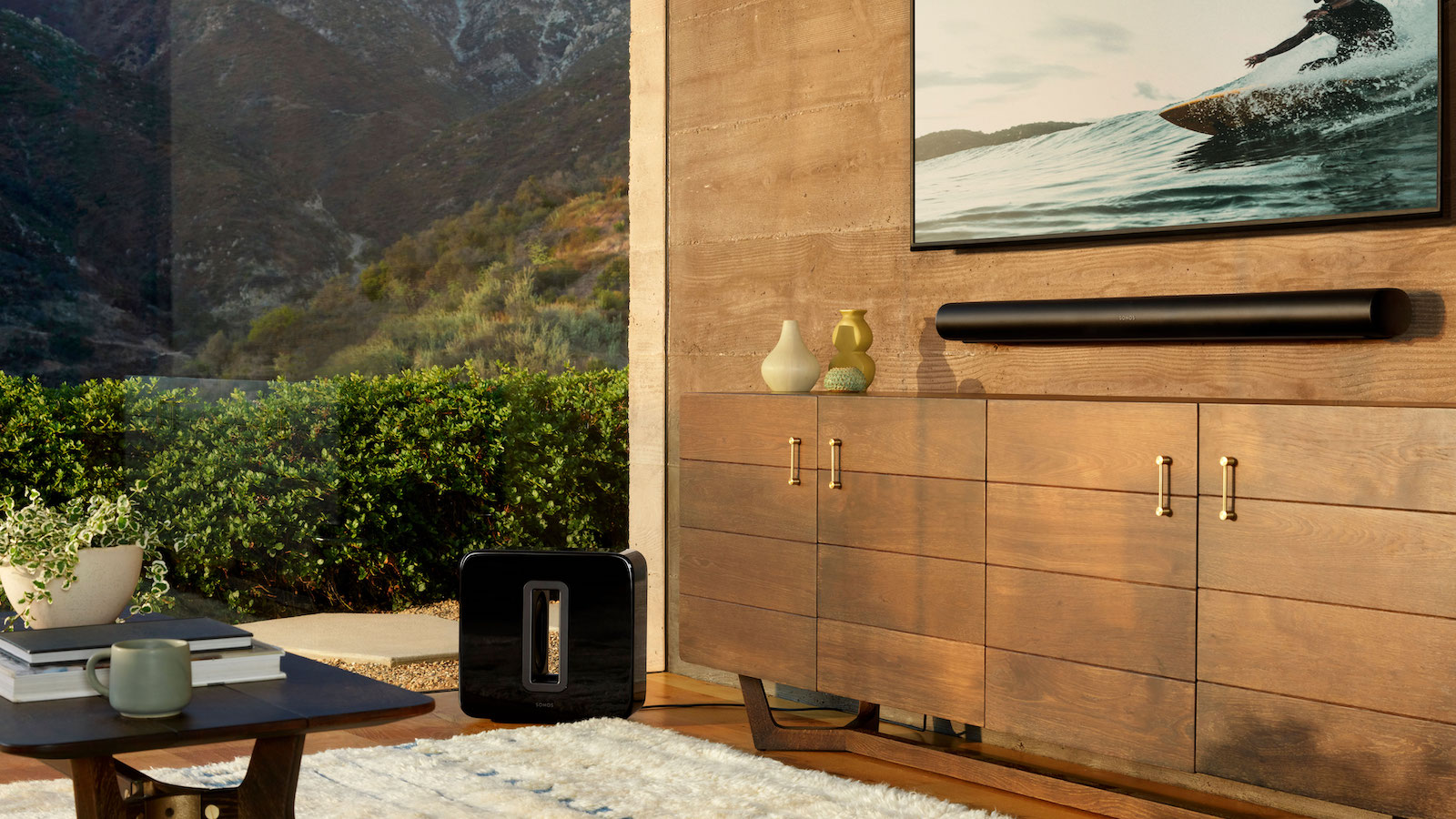
The Ambeo Soundbar Max is an absolute beast in the sound department, but sadly the Ambeo Mini is more pale imitation than mini me.
On the plus side, the Mini is clear and detailed, and it can go quite loud without distorting. But the soundstage is woefully narrow, projection is poor and there's a lack of spatial separation between the various sound effects. The worst of it? The lack of dynamics, which robs scenes of their drama. The low-end isn't particularly good, voices lack warmth or character, and it's all just a bit underwhelming. Disappointing, especially given the pedigree of the Ambeo range.
The Arc is in a different league altogether. It places sound around the room with precision and, coupled with the excellent dynamics, that makes for a wholly immersive experience. Dynamic shifts are handled with aplomb and the bass impresses without ever overwhelming. The treble is clean and sparkly, without veering into harsh brightness, and so clearly projected is dialogue that we never feel the need to enable the Speech Enhancement feature, even in the most mumbly of dramas.
That tonal evenness helps make the Arc a much more musical performer than most soundbars. It won't replace your hi-fi, but it could easily stand in as the main speaker if you're holding a small gathering.
All in all, it's one of the most convincing Atmos presentations of any soundbar we’ve heard. Height junkies can turn up the volume of the Arc's upward-firing drivers using a separate control, but we don't find it necessary to overly boost the vertical channel to enjoy the Arc's immersive delivery.
Winner: Sonos Arc
Sennheiser Ambeo Soundbar Mini vs Sonos Arc: verdict
The Ambeo Mini aims to shrink the Ambeo experience into a more accessible soundbar, but sadly, it's a swing and a miss. The lack of upwards-firing drivers compromises the Atmos experience, and it's altogether lacking dynamics, low end and good old-fashioned fun. It's a little uninspiring to look at too, and the rear port placement is ill-thought-out.
The Sonos Arc is the clear winner. It looks better, has more advanced features and communicates sound more convincingly. It also works seamlessly with other Sonos speakers and even sounds pretty good handling music. No contest.
MORE:
5 mistakes everyone makes with Sonos' Dolby Atmos soundbars
These are the best Dolby Atmos soundbars
22 of the best Dolby Atmos movie scenes that put your soundbar to the test
Get the What Hi-Fi? Newsletter
The latest hi-fi, home cinema and tech news, reviews, buying advice and deals, direct to your inbox.
Joe has been writing about tech for 20 years, first on staff at T3 magazine, then in a freelance capacity for Stuff, The Sunday Times Travel Magazine (now defunct), Men's Health, GQ, The Mirror, Trusted Reviews, TechRadar and many more. His specialities include all things mobile, headphones and speakers that he can't justifying spending money on.

